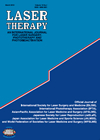Volume 21, Issue 2
Displaying 1-16 of 16 articles from this issue
- |<
- <
- 1
- >
- >|
Editorial
-
2012 Volume 21 Issue 2 Pages 89-91
Published: 2012
Released on J-STAGE: July 03, 2012
Download PDF (86K)
Kaplan’s Corner
-
2012 Volume 21 Issue 2 Pages 93-96
Published: 2012
Released on J-STAGE: July 03, 2012
Download PDF (776K)
Original Article
-
2012 Volume 21 Issue 2 Pages 97-103
Published: 2012
Released on J-STAGE: July 03, 2012
Download PDF (181K) -
2012 Volume 21 Issue 2 Pages 105-111
Published: 2012
Released on J-STAGE: July 03, 2012
Download PDF (1318K) -
2012 Volume 21 Issue 2 Pages 113-123
Published: 2012
Released on J-STAGE: July 03, 2012
Download PDF (2709K)
Guidelines
-
2012 Volume 21 Issue 2 Pages 124-128
Published: 2012
Released on J-STAGE: July 03, 2012
Download PDF (114K) -
2012 Volume 21 Issue 2 Pages 129-136
Published: 2012
Released on J-STAGE: July 03, 2012
Download PDF (134K) -
2012 Volume 21 Issue 2 Pages 137-145
Published: 2012
Released on J-STAGE: July 03, 2012
Download PDF (149K)
The Winners of the Best/Good Paper Awards 2011
-
2012 Volume 21 Issue 2 Pages 147
Published: 2012
Released on J-STAGE: July 03, 2012
Download PDF (335K)
WFSLMS & ISLSM Newsletter (Issue 29)
-
2012 Volume 21 Issue 2 Pages 146
Published: 2012
Released on J-STAGE: July 03, 2012
Download PDF (211K)
Profile of Authors and Co-Authors
-
2012 Volume 21 Issue 2 Pages 148
Published: 2012
Released on J-STAGE: July 03, 2012
Download PDF (94K)
WALT 2012 Laser Therapy Congress
-
2012 Volume 21 Issue 2 Pages 149-150
Published: 2012
Released on J-STAGE: July 03, 2012
Download PDF (1033K)
The 5th International NESA Conference
-
2012 Volume 21 Issue 2 Pages 151
Published: 2012
Released on J-STAGE: July 03, 2012
Download PDF (344K)
14th APALMS 2012
-
2012 Volume 21 Issue 2 Pages 152-153
Published: 2012
Released on J-STAGE: July 03, 2012
Download PDF (1950K)
Regulations of the International Laser License System (ILLiS)
-
2012 Volume 21 Issue 2 Pages 154-156
Published: 2012
Released on J-STAGE: July 03, 2012
Download PDF (104K)
Meeting Calendar
-
2012 Volume 21 Issue 2 Pages 157
Published: 2012
Released on J-STAGE: July 03, 2012
Download PDF (67K)
- |<
- <
- 1
- >
- >|
